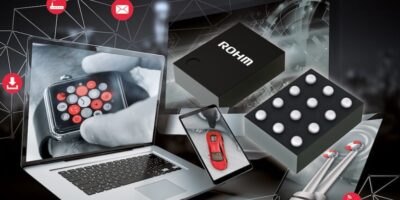NGK Insulators offers the EnerCera Coin, a coin type cell for IoT devices and claims they are the world’s first Lithium-ion (Li-ion) secondary battery capable of operating at up to +85 degrees C.
Power
Buck-boost DC/DC converter save power and prolongs battery life
Claimed to offer unmatched efficiency with best-in-class current consumption, the BD83070GWL is a buck-boost DC/DC converter with integrated MOSFET from Rohm.
Real-time clock extends battery life for wearables
The battery life of space-constrained systems such as wearables, medical monitors, point-of-sale (PoS) equipment and portable terminals can be extended, says Maxim Integrated, using the MAX31341B.
Varta announces rechargeable batteries for hearing aids
Rechargeable Lithium-ion batteries with a high-energy density and capacity will be unveiled at the Wearable Technologies Conference in San Francisco for wearables and hearables (hearing aids, over-ear headphones and wireless telephony ear buds).
About Weartech
This news story is brought to you by weartechdesign.com, the specialist site dedicated to delivering information about what’s new in the wearable electronics industry, with daily news updates, new products and industry news. To stay up-to-date, register to receive our weekly newsletters and keep yourself informed on the latest technology news and new products from around the globe. Simply click this link to register here: weartechdesign.com







